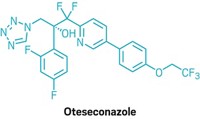Advertisement
Grab your lab coat. Let's get started
Welcome!
Welcome!
Create an account below to get 6 C&EN articles per month, receive newsletters and more - all free.
It seems this is your first time logging in online. Please enter the following information to continue.
As an ACS member you automatically get access to this site. All we need is few more details to create your reading experience.
Not you? Sign in with a different account.
Not you? Sign in with a different account.
ERROR 1
ERROR 1
ERROR 2
ERROR 2
ERROR 2
ERROR 2
ERROR 2
Password and Confirm password must match.
If you have an ACS member number, please enter it here so we can link this account to your membership. (optional)
ERROR 2
ACS values your privacy. By submitting your information, you are gaining access to C&EN and subscribing to our weekly newsletter. We use the information you provide to make your reading experience better, and we will never sell your data to third party members.
Synthesis
Acetaminophen Toxicity
May 7, 2012
| A version of this story appeared in
Volume 90, Issue 19
Stephen A. Munk hypothesizes that acetaminophen owes its toxic effects (including a recently discovered link to asthma) to a mechanism involving metabolic oxidation of its hydroquinone-like structure followed by reaction with essential nucleophiles and glutathione depletion (C&EN, March 26, page 7). He suggests that “this line of work is worth pursuing,” but this mechanism is already well-known.
As shown, acetaminophen, a widely used analgesic drug, is rapidly metabolized to a hepatotoxic N-acetyl-p-quinone intermediate by a number of cytochrome P450 enzymes. Acetaminophen’s analgesic and antipyretic properties are due to the inhibition of cyclooxygenase enzymes involved in prostaglandin synthesis. Limited amounts of acetaminophen may be safely ingested, but larger amounts fully deplete the stores of glutathione and can lead to liver failure or even death.
Warnings about this are printed on every package of acetaminophen.
By Manfred E. Wolff
Laguna Beach, Calif





Join the conversation
Contact the reporter
Submit a Letter to the Editor for publication
Engage with us on Twitter